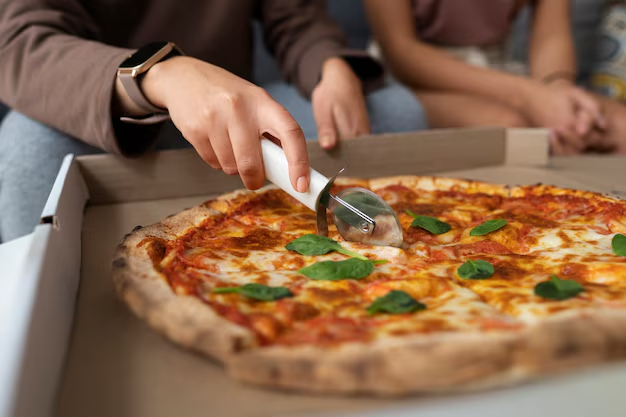How Long Can You Keep Pizza Fresh in the Refrigerator?
Do you ever find yourself savoring the last bite of a delicious pizza, pondering how long the leftovers will last in the fridge? Fear not, because you're not alone, and we're here to unveil everything you need to know about storing pizza to keep it delicious and safe for consumption. Pizza, a universally adored dish, often graces our tables for parties, family dinners, and quick meals. However, knowing how long it lasts in the refrigerator can make a substantial difference in reducing food waste and ensuring food safety.
Understanding the Basics of Pizza Storage
When it comes to storing pizza, the golden rule is timeliness. Timely refrigeration not only preserves the flavor and texture of your pizza but also ensures that it's safe to eat. Refrigeration, as you might expect, slows down the growth of bacteria, extending the shelf life of food.
The Magic Number: How Long is Pizza Good?
As a general guideline, pizza stored in the refrigerator is best eaten within 3 to 4 days. This timeframe ensures that the toppings, cheese, and crust stay fresh while minimizing the risk of bacterial growth. Mind you, the fresher the pizza, the better it tastes, so sooner is always better when it comes to leftovers.
Factors Affecting Pizza Longevity
Several factors influence how long pizza remains good in the fridge, including:
- Ingredients: The type of toppings can significantly affect shelf life. For instance, pizzas with highly perishable toppings such as seafood may have a shorter lifespan compared to a simple cheese pizza.
- Storage Method: How you store your pizza matters. Proper sealing and refrigeration are key.
- Refrigerator Temperature: Ensure your fridge is set at or below 40°F (4°C).
Proper Pizza Storage Techniques
Mastering the art of pizza storage can save you from unwelcome surprises and ensure that your pizza remains delightful long after its original serving time.
Pre-Storage Preparations
Before you tuck that pizza into the fridge, there are a few steps to enhance its longevity:
- Allow it to Cool: Before refrigeration, let the pizza cool to room temperature. Doing so minimizes condensation in the container, which can lead to sogginess.
- Divide and Conquer: Slice the pizza into smaller portions if it's a large pie. This won't just help with storage space, but also with reheating efficiency.
Effective Storage Methods
- Airtight Containers: Store slices in airtight containers to maintain moisture levels and prevent odors from other foods seeping in.
- Plastic Wrap or Aluminum Foil: If containers aren’t handy, wrap slices tightly with plastic wrap or aluminum foil.
- Avoid Stacking: Try not to stack slices. If you must, place a sheet of parchment paper between layers to avoid sticking.
Freezing for Extended Storage
Got more pizza than you can handle within a few days? Freezing is a fantastic option:
- Preparation: Wrap each slice or portion tightly in plastic wrap, followed by a layer of aluminum foil for added protection.
- Storage Duration: When frozen properly, pizza can remain edible for up to two months.
- Thawing Tips: When ready to eat, thaw pizza in the refrigerator overnight for best results, then reheat.
Reheating: Keeping Your Pizza Delicious
Reheating pizza is an art in itself, aiming to retain the texture and flavor of a freshly baked pie.
Best Reheating Practices
- Oven: Preheat to 375°F (190°C), place slices on a baking tray, and bake for about 10 minutes. This method crisps the crust while warming toppings evenly.
- Stovetop: Heat a non-stick skillet on medium, place the slice in, and cover. In 5-7 minutes, the crust should be crispy, and cheese gooey.
- Microwave with Water: If you're in a hurry, place a cup of water alongside your slice in the microwave to minimize chewiness.
Recognizing Spoilage: When to Toss It
While pizza’s delightful taste may tempt you to stretch its lifespan, it's crucial to recognize signs of spoilage:
- Off Smell: An unpleasant odor is a dead giveaway.
- Mold: Any sight of mold means it's time to discard.
- Discoloration: Changes in color across the crust or toppings should be treated as a warning sign.
Additional Tips for Pizza Lovers
Beyond Storage: Enjoying Pizza at Its Best
Properly storing and reheating pizza can elevate your leftover experience. Here are some extra pointers to savor every bite:
- Enhance Your Reheated Pizza: Sprinkle a little fresh basil or add a dash of hot sauce to revitalize flavors.
- Creative Solutions: Transform leftovers into a new dish, like pizza-stuffed peppers or a savory breakfast scramble.
- Monitor Your Fridge: Regularly check refrigerator contents for freshness, keeping pizza on your radar.
📝 Quick Summary
Here's a visual summary of the key tips for storing and enjoying pizza:
- 👨🍳 Cool Before Storing: Let it reach room temperature first.
- 🔒 Airtight Is Right: Use airtight containers or wraps.
- ⏳ Follow the 4-Day Rule: Consume refrigerated pizza within 3-4 days.
- ❄️ Consider Freezing: Wrap tightly for extended storage.
- 🔥 Reheat Correctly: Use the oven, stovetop, or microwave as needed.
- 🕵️♀️ Spoilage Signs: Look for mold, discoloration, or a sour smell.
These simple yet effective strategies can help make the most of your pizza, reducing waste and enhancing your culinary enjoyment.
Understanding how long pizza is good in the refrigerator is a journey through the principles of food safety and savvy storage techniques. With the right practices, you can savor your favorite flavors long after the original meal, ensuring every bite of your leftover pizza is as enchanting as the first. Whether you're a fan of classic Margherita or a bold meat-lover's pie, these tips will empower you to store and enjoy pizza effectively. Bon appétit!
